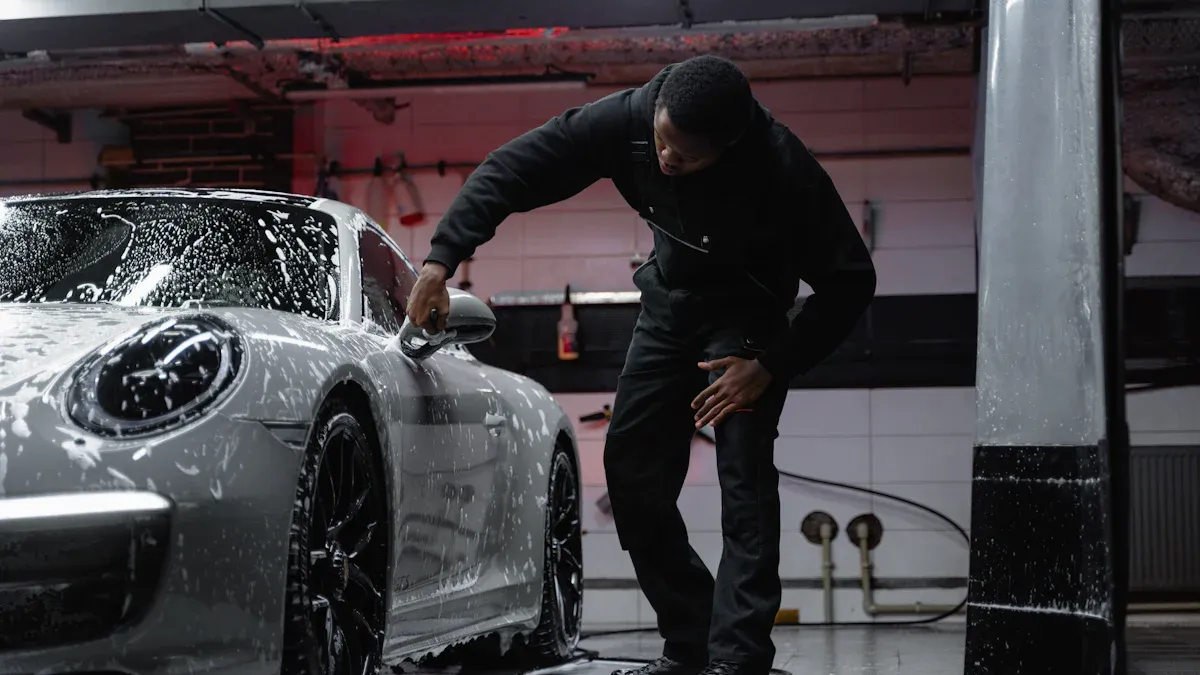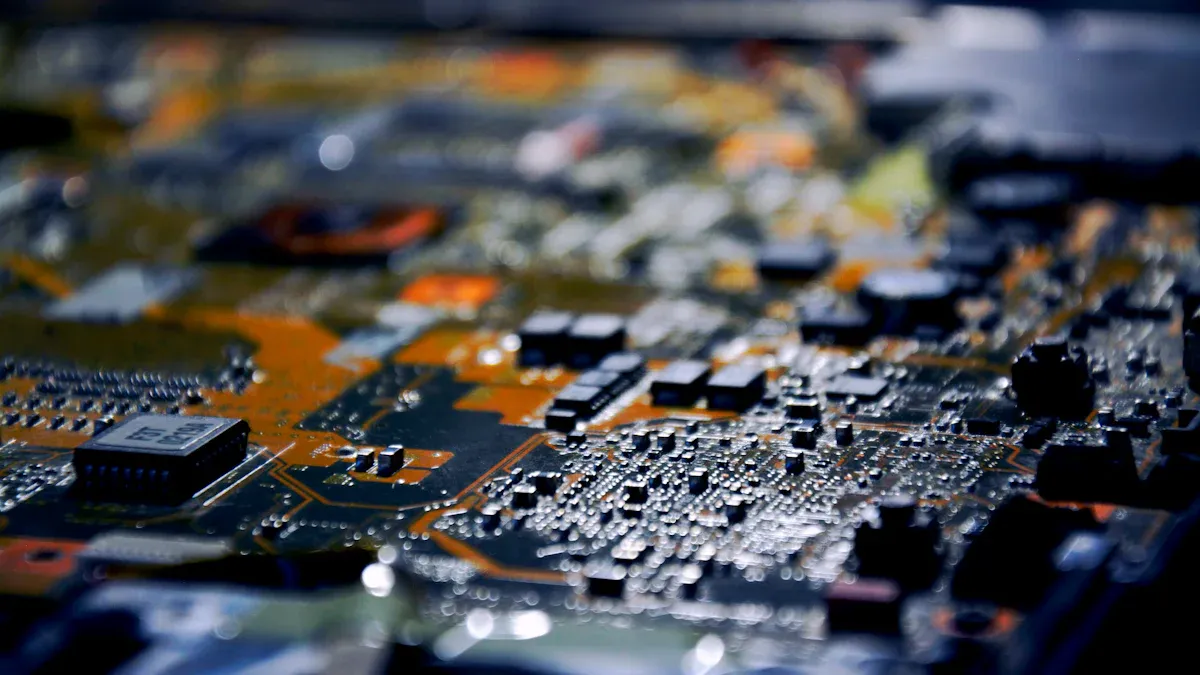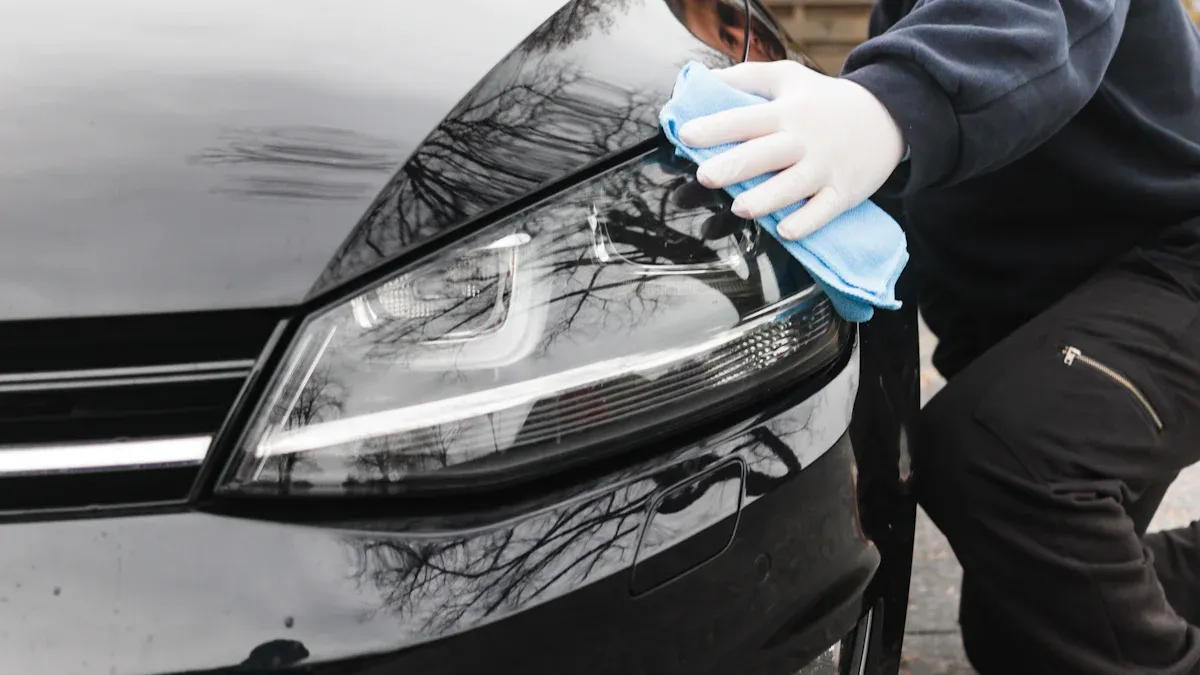
Nanotechnology transforms ceramic coatings into advanced protective solutions. It enables you to enjoy surfaces that repel water, resist scratches, and endure harsh conditions. By manipulating materials at the nanoscale, these coatings deliver exceptional durability and performance, ensuring long-lasting protection for your belongings in everyday and extreme environments.
キーテイクアウト
- Ceramic coatings protect items from dirt, scratches, and sunlight.
- Nanotechnology makes coatings stronger and water-resistant, keeping them cleaner.
- These coatings work on cars, boats, and gadgets, lasting longer.
Ceramic Coatings: Definition and Purpose
What Are Ceramic Coatings?
Ceramic coatings are advanced liquid polymers designed to protect surfaces. When applied, they bond chemically with the surface, creating a durable and transparent layer. This layer acts as a shield, guarding against damage from environmental factors like dirt, water, and UV rays. Unlike traditional waxes or sealants, ceramic coatings offer long-lasting protection that doesn’t wash away easily.
You’ll often find ceramic coatings used on vehicles, electronics, and even household items. Their unique properties come from nanotechnology, which allows the coating to form an ultra-thin yet strong barrier. This makes them ideal for preserving the appearance and functionality of various surfaces.
Key Benefits of Ceramic Coatings
Ceramic coatings provide several benefits that make them a popular choice for surface protection. Here are some key advantages:
- Hydrophobicity: Water beads up and rolls off the surface, taking dirt and grime with it. This makes cleaning easier and keeps surfaces looking new.
- Scratch Resistance: The tough layer helps prevent minor scratches and abrasions, extending the lifespan of your belongings.
- UV Protection: Ceramic coatings block harmful UV rays, reducing the risk of fading or discoloration over time.
- Chemical Resistance: They protect against damage from harsh chemicals, such as cleaning agents or road salts.
- Enhanced Appearance: Surfaces coated with ceramic coatings often have a glossy, polished finish that enhances their visual appeal.
By choosing ceramic coatings, you ensure long-term protection and reduced maintenance for your valuable items.
Nanotechnology in Ceramic Coatings

Introduction to Nanotechnology
Nanotechnology deals with manipulating materials at an incredibly small scale—down to the size of atoms and molecules. When you hear "nano," think of something a billion times smaller than a meter. Scientists use this technology to design materials with unique properties that wouldn’t exist otherwise. These properties include increased strength, enhanced durability, and improved resistance to environmental factors.
In ceramic coatings, nanotechnology plays a crucial role. It allows the creation of ultra-thin layers that are both strong and flexible. These layers protect surfaces without adding bulk or weight. By working at the nanoscale, researchers can engineer coatings that bond tightly to surfaces, ensuring long-lasting protection. This innovation has transformed how surfaces are shielded from wear and tear, making nanotechnology a cornerstone of modern ceramic coatings.
ヒント: Nanotechnology isn’t just about making things smaller; it’s about unlocking new possibilities by controlling materials at the atomic level.
How Nanotechnology Enhances Surface Coatings
Nanotechnology enhances ceramic coatings in several ways, making them more effective and versatile. First, it improves the coating’s ability to bond with surfaces. When you apply a ceramic coating, nanoparticles penetrate microscopic imperfections, creating a seamless and durable layer. This tight bond ensures the coating stays intact even under challenging conditions.
Second, nanotechnology boosts the protective properties of ceramic coatings. Nanoparticles create a hydrophobic surface, meaning water and dirt slide off easily. This keeps surfaces cleaner and reduces the need for frequent maintenance. Additionally, these coatings resist scratches and abrasions, preserving the appearance of your belongings.
Third, nanotechnology enhances UV protection. Nanoparticles block harmful ultraviolet rays, preventing fading and discoloration. This is especially important for items exposed to sunlight, like cars and outdoor furniture. By integrating nanotechnology, ceramic coatings offer a level of protection that traditional coatings can’t match.
Finally, nanotechnology makes ceramic coatings more adaptable. Whether you’re protecting a car, a boat, or a smartphone, these coatings can be tailored to meet specific needs. This flexibility has made ceramic coatings a go-to solution across industries.
Note: The advancements in nanotechnology have not only improved ceramic coatings but also expanded their applications, making them indispensable in modern life.
Nanoparticles and Their Role
Hydrophobic Properties
Nanoparticles play a key role in making surfaces hydrophobic. When you apply ceramic coatings, these tiny particles create a water-repellent layer. This layer forces water to bead up instead of spreading across the surface. As the water rolls off, it carries dirt and grime with it, leaving the surface clean.
Think about your car after a rainstorm. Without a hydrophobic coating, water leaves streaks and spots behind. With ceramic coatings enhanced by nanoparticles, the water simply slides away. This property not only keeps surfaces cleaner but also reduces the need for frequent washing.
ヒント: Hydrophobic surfaces are perfect for items exposed to moisture, like cars, boats, and outdoor furniture. They save you time and effort while maintaining a polished look.
Scratch Resistance
Nanoparticles strengthen ceramic coatings, making them resistant to scratches. These particles form a tough, protective layer that shields surfaces from minor abrasions. When you accidentally brush against a coated surface, the nanoparticles absorb the impact, preventing damage.
For example, imagine your smartphone screen. Without protection, it’s vulnerable to scratches from keys or coins in your pocket. A ceramic coating with nanoparticles acts like armor, keeping the screen smooth and clear.
This scratch resistance is especially useful for vehicles and electronics. It helps preserve their appearance and functionality over time. You’ll notice fewer signs of wear and tear, even with regular use.
UV Protection
Nanoparticles also protect surfaces from harmful ultraviolet (UV) rays. These rays can cause fading, discoloration, and even structural damage over time. Ceramic coatings infused with nanoparticles block UV rays, acting like sunscreen for your belongings.
Picture your car parked outside on a sunny day. Without UV protection, the paint might fade or lose its shine. With a ceramic coating, the nanoparticles reflect UV rays, keeping the color vibrant and the surface intact.
UV protection isn’t just for vehicles. It’s valuable for outdoor furniture, boats, and other items exposed to sunlight. By using ceramic coatings, you extend the lifespan of your possessions and maintain their original appearance.
Note: Nanoparticles make ceramic coatings versatile, offering hydrophobic properties, scratch resistance, and UV protection in one solution.
Chemical Bonding and Durability
Bonding Mechanism
Ceramic coatings rely on chemical bonding to adhere to surfaces. When you apply the coating, its molecules interact with the surface at the atomic level. This process creates a strong and permanent bond. Unlike traditional coatings, which sit on top of the surface, ceramic coatings integrate into the material.
This bonding mechanism ensures the coating doesn’t peel or wash away easily. Nanoparticles within the coating fill microscopic gaps and imperfections, forming a seamless layer. This layer acts as a shield, protecting the surface from damage. You’ll notice how the coating stays intact even after exposure to harsh conditions.
ヒント: Proper surface preparation before applying ceramic coatings enhances the bonding process, ensuring maximum durability.
Resistance to Environmental Factors
Ceramic coatings excel at resisting environmental challenges. Their chemical structure makes them impervious to water, dirt, and chemicals. When exposed to rain or road salt, the coating prevents these elements from penetrating the surface. This keeps your belongings safe from corrosion and wear.
UV rays, temperature changes, and pollutants also fail to break down the coating. Nanoparticles within the ceramic layer block harmful rays and maintain the surface’s integrity. You’ll find this especially useful for items like cars, boats, and outdoor furniture.
By using ceramic coatings, you protect your possessions from environmental damage while reducing maintenance needs.
Applications of Ceramic Coatings

Automotive Protection
Ceramic coatings have revolutionized how you protect your vehicle. When applied to a car’s exterior, they create a durable shield that resists scratches, dirt, and harmful UV rays. This protective layer keeps your car looking new for longer. Water and grime slide off effortlessly, reducing the need for frequent washing. You’ll also notice how the glossy finish enhances the car’s appearance, making it stand out on the road.
These coatings are especially useful for protecting against environmental damage. Road salt, bird droppings, and tree sap can harm your car’s paint. Ceramic coatings prevent these substances from sticking, preserving the vehicle’s original color and shine. Whether you drive daily or store your car for special occasions, this technology ensures long-term protection.
Marine and Aerospace Uses
In marine and aerospace industries, ceramic coatings provide unmatched durability. Boats and ships face constant exposure to saltwater, which can corrode surfaces. By applying ceramic coatings, you create a barrier that resists corrosion and reduces maintenance needs. The hydrophobic properties also prevent algae and barnacles from attaching to the hull, improving efficiency and performance.
Aircraft benefit from these coatings as well. They protect against extreme temperatures, UV radiation, and moisture. This ensures the aircraft’s surface remains intact during long flights and harsh weather conditions. Whether on water or in the air, ceramic coatings enhance performance and extend the lifespan of valuable equipment.
Everyday Consumer Applications
Ceramic coatings aren’t just for vehicles and industrial uses. You can find them in everyday items like smartphones, kitchenware, and eyeglasses. A ceramic-coated smartphone screen resists scratches and fingerprints, keeping it clear and smooth. Non-stick cookware with ceramic coatings makes cooking and cleaning easier. Even your sunglasses may use this technology to block UV rays and repel water.
These coatings improve the durability and functionality of items you use daily. They reduce wear and tear, ensuring your belongings last longer. By choosing products with ceramic coatings, you invest in quality and convenience for your everyday life.
Nanotechnology transforms ceramic coatings into versatile solutions for surface protection. You benefit from enhanced durability, hydrophobic properties, and UV resistance across industries like automotive, marine, and consumer goods. Future advancements may unlock even greater efficiency, enabling coatings to adapt to evolving environmental challenges and technological needs.
よくある質問
What makes ceramic coatings better than traditional waxes?
Ceramic coatings last longer and resist environmental damage better. Nanotechnology ensures stronger bonds, hydrophobic properties, and UV protection, unlike waxes that wear off quickly.
Can ceramic coatings be applied to any surface?
You can apply ceramic coatings to most surfaces, including metal, glass, and plastic. Proper preparation ensures the coating bonds effectively and delivers maximum protection.
How do I maintain a surface with ceramic coating?
Use mild cleaners and avoid abrasive tools. Hydrophobic properties make cleaning easy, so regular washing keeps the surface looking polished and protected.


